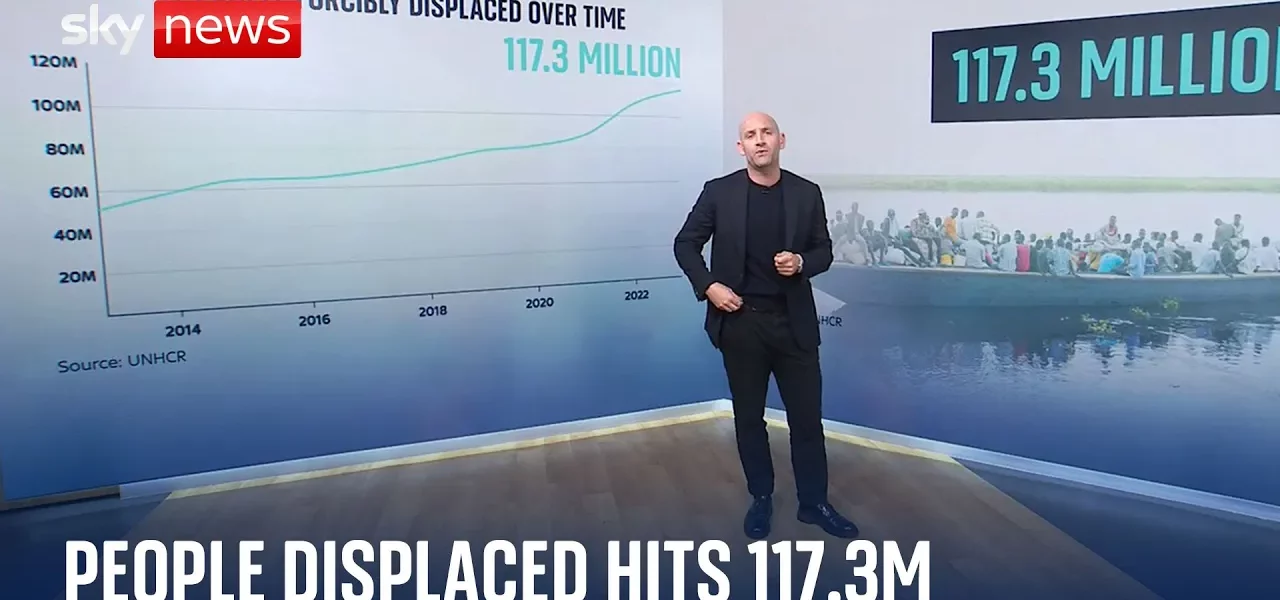The Global Immigration and Asylum Crisis: An In-Depth Analysis

This article explores the pressing global issue of immigration and asylum, examining the latest UN data and the responses of governments and political parties worldwide. With a staggering rise in the number of forcibly displaced individuals, it is crucial to understand the context and implications of this crisis.
Introduction
The topic of immigration and asylum is increasingly at the forefront of political discourse globally. Recent discussions often focus on what governments and political parties should do in response to the rising number of individuals seeking refuge from conflict, climate change, and other crises. However, it is essential to place this issue within a global context, as it affects millions of people and poses significant challenges not just for richer nations, but for those less economically stable as well. According to the latest data from the United Nations, the situation is becoming more critical, with unprecedented numbers of people being forcibly displaced.
Understanding Forced Displacement
Forced displacement encompasses various forms of migration, primarily driven by conflict, persecution, and environmental factors. As of the latest reports, the number of forcibly displaced individuals has seen a dramatic increase.
Statistics Overview
In 2013, the global number of forcibly displaced persons was approximately 60 million. However, this figure has surged to 117.5 million, representing an increase of 8.8 million from 2022 alone. This upward trend reflects a broader pattern of displacement issues that have persisted over the last decade.
Categories of Displacement
- Internally Displaced Persons (IDPs): Approximately 68 million individuals are internally displaced, meaning they have fled their homes but remain within their country’s borders.
- Refugees: About 43 million people have crossed international borders to seek refuge, fleeing to other countries.
- Asylum Seekers: Around 7 million individuals are currently seeking formal settlement status, primarily in developed nations.
Geographical Context of Refugees
The crisis of refugees varies significantly across different regions, with some areas being more affected than others. Understanding where these individuals come from and where they are going is crucial for grasping the magnitude of the situation.
Countries of Origin
Countries with the highest numbers of refugees include:
- Afghanistan
- Syria
- Ukraine
- Various nations in Africa and South America
Countries of Resettlement
The hosting countries also exhibit a diverse landscape. Countries like Chad and Iran have taken in significant numbers of refugees, despite having lower GDP per capita compared to wealthier nations.
Economic Consideration of Refugee Hosting
One interesting way to analyze the refugee crisis is to compare the number of refugees hosted against the economic capacity of the country.
Refugees and GDP
Graphical representations show an inverse relationship between wealth and the number of refugees hosted:
- Iran: Over 3.75 million refugees, low GDP per capita.
- Chad: Hosts over one million refugees, marginally above the poverty line.
- Germany: Wealthy economy but also hosts a significant number of refugees, making it an outlier.
- UK and US: Despite their wealth, they rank lower in the number of refugees hosted compared to poorer countries.
The Political Debate
The rising numbers of refugees and asylum seekers have sparked heated debates among political parties worldwide. Some argue that the influx of refugees strains resources, while others highlight the humanitarian responsibility to provide sanctuary.
Arguments For and Against
- For Accepting Refugees:
- Humanitarian obligation to help those in need.
- Economic benefits from a diverse workforce.
- Against Accepting Refugees:
- Concerns about resource allocation and national security.
- Political backlash from constituents.
Conclusion
The global immigration and asylum crisis is a complex issue that requires a nuanced understanding of the various factors at play. As the numbers continue to rise, it becomes increasingly essential for governments and political parties to engage in informed discussions and develop effective policies. The onus is on richer nations to recognize the contributions of poorer countries that are hosting the majority of refugees. It is imperative to foster international cooperation and compassion in addressing the needs of those forcibly displaced. Learn more about our related articles to understand the multifaceted nature of this crisis.
“`




